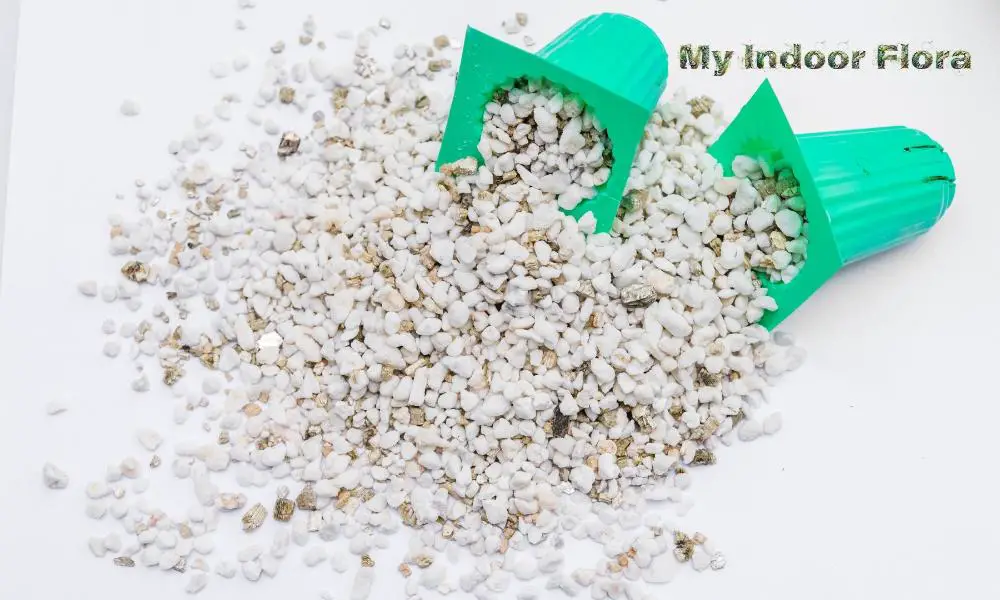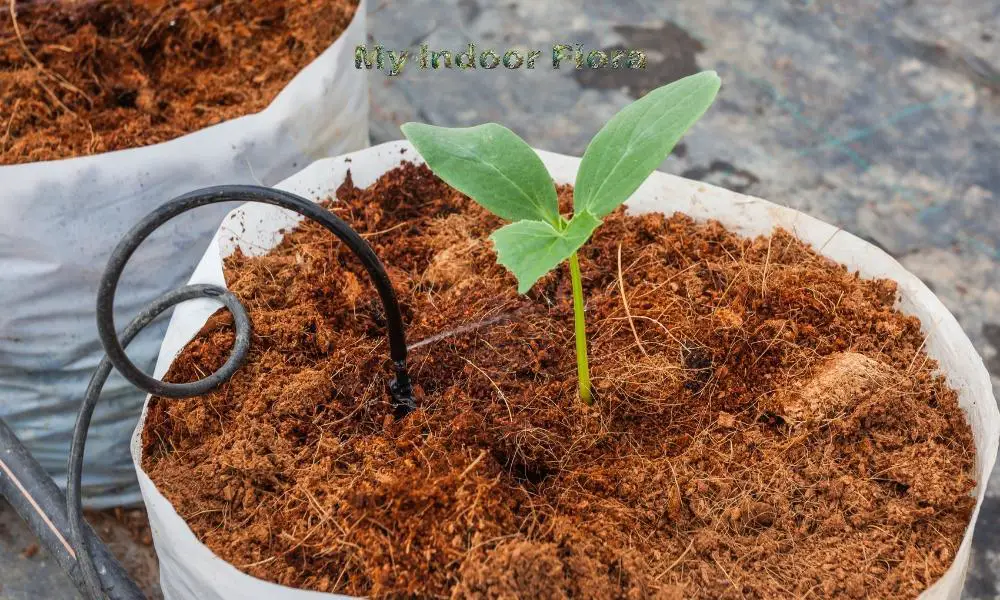Indoor plants have become increasingly popular as they enhance the aesthetics of living spaces and offer various health benefits, such as purifying the air and boosting mental well-being. However, achieving optimal plant growth and health relies heavily on the quality of the soil in which they grow. Soil amendments like perlite, vermiculite, and others play a crucial role in improving soil conditions, ensuring that indoor plants have the necessary nutrients, aeration, and drainage to thrive.
Perlite, a volcanic glass with a unique, porous structure, can significantly improve soil aeration and drainage, while vermiculite, a hydrated magnesium aluminum silicate, excels in moisture retention and nutrient-holding capacity.
A study published in the journal HortScience highlights the benefits of using these amendments in indoor plant care. This comprehensive article will explore the advantages of perlite, vermiculite, and other soil amendments, providing actionable insights and guidance to create the ideal environment for your indoor plants to flourish.

What are Perlite, Vermiculite, and Other Common Soil Amendments for Indoor Plants?
Before diving into the benefits of these soil amendments, let’s first familiarize ourselves with perlite, vermiculite, and other common amendments suitable for indoor plants. Understanding their properties and characteristics will help us appreciate their significance in maintaining a healthy environment for our plants.
Perlite
Perlite is a volcanic glass that, when heated, expands into a lightweight, porous material. It is commonly used as a soil amendment for indoor plants because of its unique properties. According to a study by Dr. James Altland from the USDA-ARS Application Technology Research Unit, perlite helps improve soil aeration, drainage, and moisture retention, making it an ideal choice for various indoor plants.
Vermiculite
Vermiculite is a hydrous phyllosilicate mineral that also expands when heated. It forms a lightweight, absorbent material that is commonly used as a soil amendment for indoor plants. Dr. George Elliott from the University of Connecticut’s Department of Plant Science and Landscape Architecture explains that vermiculite aids in soil aeration, water retention, and nutrient availability, providing essential benefits for indoor plants.
Examples of Other Common Soil Amendments
In addition to perlite and vermiculite, several other soil amendments are suitable for indoor plants. Some examples include:
- Compost and organic matter: Adding compost and other organic materials to your indoor plant soil can provide essential nutrients, improve soil structure, and support beneficial microorganisms.
- Coco coir: Made from coconut husks, coco coir is a renewable and eco-friendly amendment that improves soil structure, water retention, and drainage.
- Peat moss: This organic material has excellent water retention properties and can help improve soil structure and acidity levels for acid-loving plants.
In the following sections, we will delve deeper into the importance of soil amendments for indoor plant growth and soil health, as well as the specific benefits of perlite, vermiculite, and other amendments.

Why are Soil Amendments Important for Indoor Plant Growth and Soil Health?
Soil amendments play a vital role in creating a favorable environment for indoor plants to thrive. They address various issues in the soil, such as poor aeration, inadequate drainage, and insufficient nutrient availability. In this section, we’ll explore the specific benefits of soil amendments and how they contribute to the overall well-being of indoor plants.
The Role of Soil Amendments in Improving Soil Structure for Indoor Plants
One of the primary benefits of soil amendments is their ability to improve soil structure. A study published in the journal HortScience by Dr. Paul Fisher and Dr. Bill Fonteno highlights the importance of soil structure for indoor plants. Good soil structure promotes proper root development, enables efficient water and nutrient uptake, and provides adequate oxygen supply to plant roots. By incorporating perlite, vermiculite, and other amendments, you can enhance soil structure and create a more favorable environment for your indoor plants to thrive.
The Impact of Soil Amendments on Nutrient Availability for Indoor Plants
Nutrient availability is another crucial aspect of soil health that directly influences plant growth. Soil amendments can help improve nutrient availability by increasing soil porosity, facilitating nutrient exchange, and promoting the growth of beneficial microorganisms.
According to a study conducted by Dr. Lynette Morgan and published in the journal Acta Horticulturae, the use of soil amendments like perlite and vermiculite can significantly enhance nutrient availability for indoor plants, resulting in healthier and more vibrant plants.
How Does Perlite Benefit Indoor Plant Growth and Soil Health?
Perlite has several advantages that make it an excellent choice for indoor plant soil. Let’s explore some of the key benefits of perlite and how it can help improve the growth and health of your indoor plants.
Perlite’s Effect on Soil Aeration
Proper aeration is crucial for healthy root growth and overall plant development. Perlite’s porous nature and lightweight structure help to create air pockets within the soil, promoting better aeration. A study by Dr. Holly Scoggins, published in the Journal of Environmental Horticulture, emphasizes the importance of soil aeration for indoor plant growth and how perlite can contribute to this crucial aspect.
Perlite’s Impact on Drainage in Indoor Plant Pots
Drainage is essential for preventing root rot and other issues caused by waterlogged soil. Perlite’s coarse particles improve soil drainage by creating channels that allow excess water to escape. This can help prevent overwatering issues and maintain the right moisture levels for your indoor plants.
Perlite’s Contribution to Moisture Retention
While drainage is important, it’s also necessary to retain enough moisture for your indoor plants to access water when needed. Perlite’s porous structure can hold water and slowly release it to the plant roots, ensuring consistent moisture availability. A study in the Journal of Plant Nutrition highlights the benefits of using perlite for moisture retention in indoor plant soil.
Perlite’s Role in Nutrient Availability
Perlite can also contribute to better nutrient availability for your indoor plants. Its porous structure helps it to retain nutrients and release them slowly over time. Moreover, perlite can prevent soil compaction, which can limit nutrient uptake by plant roots. The combination of these factors can lead to healthier, more vibrant indoor plants.

How Does Vermiculite Benefit Indoor Plant Growth and Soil Health?
Vermiculite offers a range of benefits for indoor plant growth and soil health. Let’s examine some of the key advantages of using vermiculite as a soil amendment for your indoor plants.
Vermiculite’s Impact on Soil Aeration
Similar to perlite, vermiculite can improve soil aeration by creating air pockets within the soil. These air pockets allow oxygen to reach the plant roots, which is essential for proper root development and overall plant health. A study in the journal HortTechnology highlights the importance of soil aeration for indoor plants and the benefits of using vermiculite to achieve optimal aeration.
Vermiculite’s Role in Water Retention
Vermiculite has a high water-holding capacity, making it an excellent choice for improving water retention in indoor plant pots. It can absorb and store water, releasing it slowly to the plant roots as needed. This helps maintain consistent moisture levels in the soil and reduces the risk of drought stress for indoor plants.
Vermiculite’s Contribution to Nutrient Availability
Vermiculite’s cation exchange capacity (CEC) allows it to hold and release nutrients, enhancing nutrient availability for indoor plants. Its high CEC means it can retain essential nutrients, such as potassium, magnesium, and calcium, and gradually release them to the plant roots. A research paper published in the journal Communications in Soil Science and Plant Analysis highlights the benefits of vermiculite’s nutrient-holding capacity for indoor plant health and growth.
Vermiculite’s Impact on Soil pH and Buffering Capacity
Vermiculite can also help maintain a stable soil pH and improve its buffering capacity. This is important, as many indoor plants have specific pH requirements for optimal growth. By using vermiculite as a soil amendment, you can create a more stable environment for your indoor plants to thrive, regardless of their pH preferences.
How Can Other Soil Amendments Benefit Indoor Plant Growth and Soil Health?
In addition to perlite and vermiculite, other soil amendments can also contribute to the health and growth of your indoor plants. Let’s examine some of the benefits offered by other common soil amendments.
Compost and Organic Matter’s Role in Soil Structure and Nutrient Availability
Adding compost and organic matter to your indoor plant soil can improve soil structure, promote the growth of beneficial microorganisms, and provide a slow-release source of essential nutrients. A study in the journal Applied and Environmental Soil Science highlights the positive impact of incorporating compost and organic matter on indoor plant growth and soil health.
Coco Coir’s Impact on Water Retention and Drainage
Coco coir, made from coconut husks, is a renewable and eco-friendly soil amendment that can improve both water retention and drainage in indoor plant pots. Its fibrous structure allows it to hold moisture while also providing sufficient air spaces for drainage. A research paper in the journal Horticulturae demonstrates the benefits of using coco coir as a soil amendment for indoor plants.
Peat Moss’s Role in Water Retention and pH Regulation
Peat moss is an organic material that has excellent water retention properties and can help improve soil structure. Additionally, it can help regulate soil pH for acid-loving plants. A study in the journal Scientia Horticulturae highlights the benefits of using peat moss as a soil amendment for indoor plants, particularly those with specific pH requirements.
What are the Advantages of Using Other Soil Amendments for Indoor Plants?
In addition to perlite, vermiculite, compost, and organic matter, several other soil amendments can benefit your indoor plants. Let’s explore the advantages of using biochar, gypsum, and greensand as soil amendments for your indoor plants.
The Benefits of Adding Compost and Organic Matter
We have already discussed the benefits of compost and organic matter in improving soil structure and nutrient availability. In addition to these advantages, organic matter can also support the growth of beneficial microorganisms, improve soil’s water-holding capacity, and provide a slow-release source of essential nutrients.
The Impact of Biochar on Soil Health and Fertility
Biochar is a carbon-rich material derived from the pyrolysis of organic matter. It can improve soil health and fertility by enhancing nutrient retention, water-holding capacity, and providing a habitat for beneficial microorganisms. A study published in the journal Plant and Soil highlights the positive effects of biochar on soil properties and plant growth in indoor settings.
The Role of Gypsum in Improving Soil Structure
Gypsum, a calcium sulfate mineral, can improve soil structure, particularly in clay-rich soils that are prone to compaction. It can help break up compacted soil, improving aeration and drainage, and providing a source of calcium and sulfur for your indoor plants. A research paper in the journal Geoderma demonstrates the benefits of using gypsum as a soil amendment for indoor plants.
The Advantages of Using Greensand for Mineral Replenishment
Greensand, a natural mineral containing iron, potassium, magnesium, and other trace elements, can help replenish essential minerals in indoor plant soil. It can improve soil structure and provide a slow-release source of nutrients for your plants. A study in the journal Applied Clay Science highlights the benefits of using greensand as a soil amendment for indoor plants.
How to Determine the Right Soil Amendments for Your Indoor Plants?
To select the right soil amendments for your indoor plants, consider the following steps:
Assessing Your Indoor Plant’s Soil Type and Existing Conditions
Examine the soil in your indoor plant pots to determine its texture, structure, and drainage capabilities. This will help you identify which amendments are needed to improve your soil’s specific properties.
Identifying the Specific Needs of the Indoor Plants You are Growing
Research the specific requirements of the indoor plants you are growing, such as their preferred soil type, pH, and nutrient needs. This will guide you in selecting the appropriate soil amendments to create the ideal growing environment.
Conducting a Soil Test to Determine Nutrient Deficiencies and pH Balance in Indoor Plant Pots
Perform a soil test to assess nutrient levels and pH balance in your indoor plant pots. This information will help you choose the right amendments to correct any deficiencies or imbalances.
How to Incorporate Perlite, Vermiculite, and Other Amendments into Your Indoor Plant Soil?
To successfully incorporate soil amendments into your indoor plant soil, consider the following techniques and recommendations:
Proper Techniques for Mixing Soil Amendments
Before starting, have all your amendments, soil, and equipment ready. Consider wearing gloves and a mask as some amendments can be dusty or have potential irritants.
Begin with a base of potting soil in your container. Gradually add your amendments, such as perlite or vermiciculite, mixing them in layer by layer. Use a clean tool like a trowel or a spatula to mix thoroughly. Ensure that the amendments are spread evenly throughout the soil and not just concentrated at the top or bottom.
Be mindful of the plant roots during the mixing process. Avoid vigorous or harsh mixing as it can cause damage to the roots, leading to potential plant stress or disease. If you are incorporating amendments into the soil of an already potted plant, take extra care while digging into the soil and mixing.
Recommended Application Rates for Different Amendments
The application rate of soil amendments can significantly impact plant health and soil condition. Applying too much of an amendment can cause nutrient imbalances, poor drainage, or other adverse effects, while applying too little may not offer the desired benefits.
Each amendment has its own ideal application rate, typically specified by the manufacturer. For instance, perlite is often added at a ratio of up to 50% for plants requiring excellent drainage, while vermiculite, which retains more water, might be used at a lower percentage for most indoor plants.
Keep in mind that these are general guidelines and the optimal rate may vary depending on the specific needs of your plant and the condition of your soil. When in doubt, consult expert resources, join gardening forums, or seek advice from local nurseries or extension services.
Timing and Frequency of Application
The timing and frequency of application for soil amendments depend on various factors, such as the type of amendment, the specific needs of your indoor plant, and the current condition of your soil.
Most amendments are best incorporated at the time of potting or repotting. This is when you can thoroughly mix the amendments into the soil without disturbing the plant’s roots. However, some amendments, like organic compost or slow-release fertilizers, can also be top-dressed (added to the surface of the soil) periodically.
The frequency of application will vary based on the amendment. Fast-acting amendments may need to be added more frequently, while slow-release amendments may only need to be added once or twice during the growing season. Again, the plant’s specific needs should guide your decisions.
Precautions to Using Perlite, Vermiculite, and Other Amendments
While perlite, vermiculite, and other soil amendments can greatly benefit your indoor plants, there are potential downsides and precautions to consider:
Environmental Concerns Related to the Extraction and Processing of Perlite and Vermiculite
The extraction and processing of perlite and vermiculite can contribute to environmental degradation, such as habitat destruction and greenhouse gas emissions. To minimize these impacts, consider sourcing eco-friendly alternatives or using amendments that have been responsibly produced.
Possible Health Risks Associated with Handling Certain Amendments Indoors
Some soil amendments, such as perlite and vermiculite, can produce fine dust particles when handled, which may pose respiratory risks when inhaled. Always use caution when handling these amendments, wear protective gear, and work in well-ventilated areas to minimize exposure.
Ensuring Proper Use and Application to Avoid Over-Amending Indoor Plant Soil
Over-amending your indoor plant soil can lead to imbalances in nutrient levels, soil pH, and other essential factors for plant growth. Always follow the recommended application rates and guidelines for each amendment to avoid potential issues.
Conclusion
Soil amendments like perlite, vermiculite, and others can significantly improve the growth and health of your indoor plants by addressing key aspects of soil health, such as aeration, drainage, moisture retention, and nutrient availability. By understanding the specific benefits of each amendment, selecting the right ones for your plants, and incorporating them properly into your indoor plant care routine, you can create a more favorable environment for your plants to thrive and enhance the beauty of your living spaces. However, it is important to consider potential downsides and precautions when using these amendments, to ensure the well-being of both your plants and yourself.
